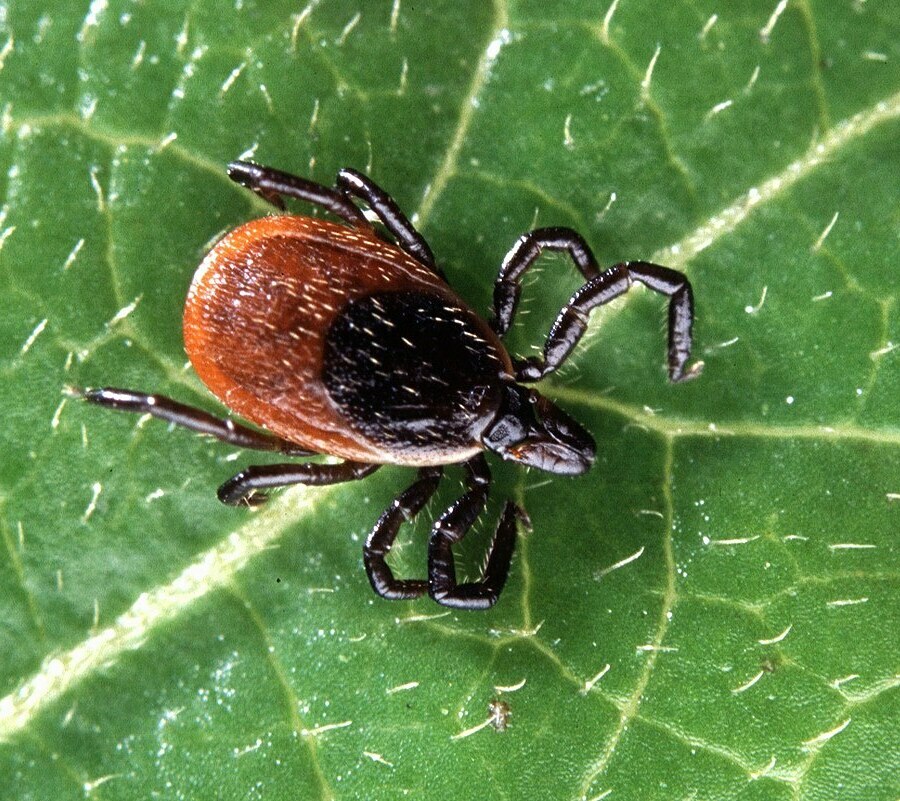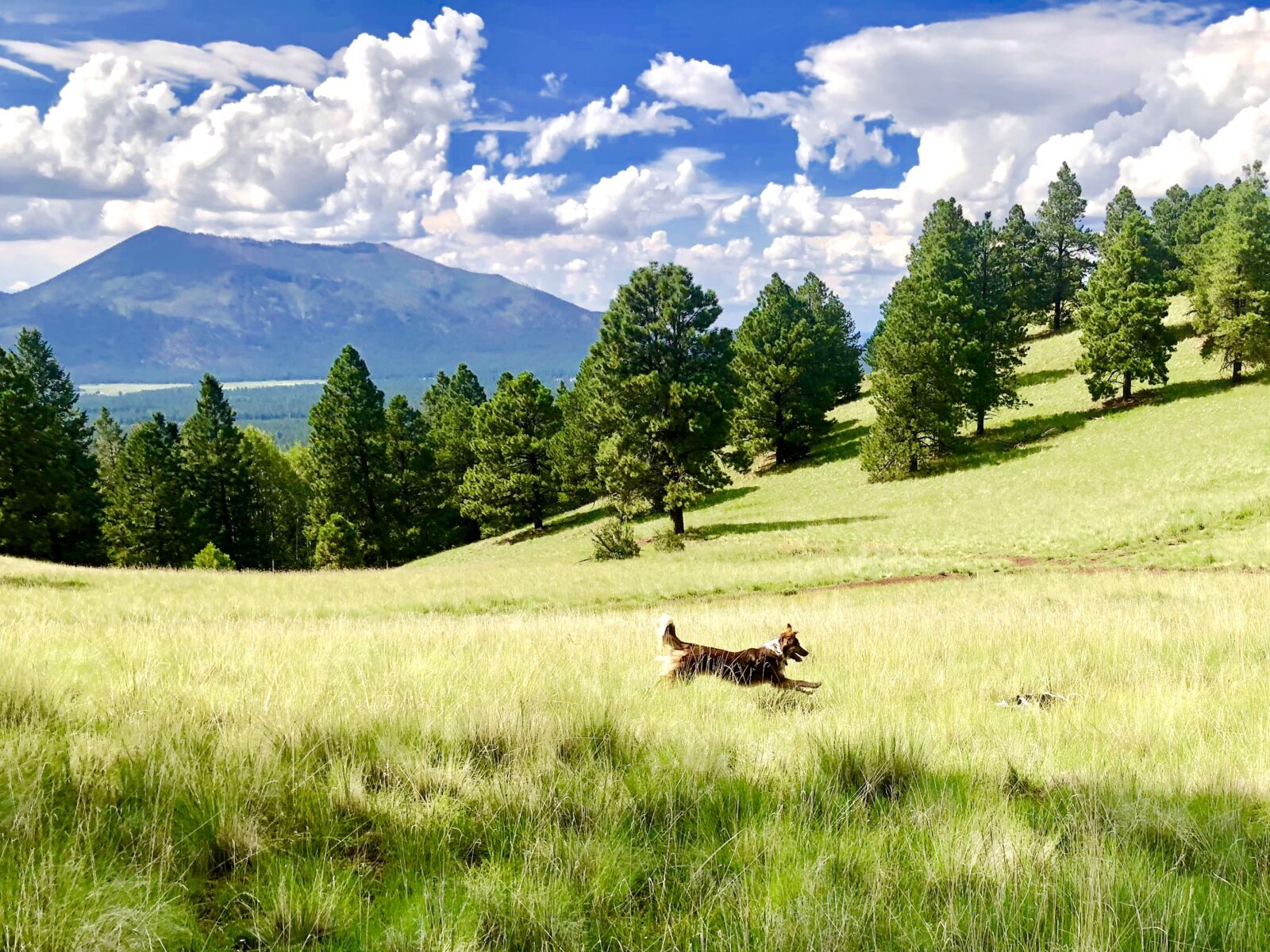Humans aren’t the only ones that are more active in the warmer months. As you get out on National Forests and Grasslands this summer, being aware of what kinds of ticks are in your area and how you can prevent bites can help keep adventures safe and fun for the whole family.
After all, the only thing worse than thinking about ticks is thinking about ticks for the first time after you have been bitten by one! Here is what you need to know to stay ahead of the curve during tick season.
Why should I be concerned about ticks?
While not all ticks carry diseases that can make us sick, tick bites can cause serious tickborne illnesses like Lyme disease and Rocky Mountain spotted fever. Because different ticks live in different parts of the country and transmit different diseases, know which ticks are most common in your area so you know which tickborne illnesses you need to watch out for.

Adult deer tick. Photo by Scott Bauer.
When are ticks most active?
Ticks can be active year-round as long as the temperature is above freezing, but ticks are most active in the warmer months of spring, summer, and early fall.
Where are ticks most commonly found?
Ticks aren’t only out in the woods; many people are bitten by ticks in their own neighborhoods and backyards. Ticks prefer shaded, grassy or bushy areas with lots of leaf litter, and tend to latch on to the legs of people and pets as they brush the vegetation on the side of trails, lawns, and other recreation areas. Once a tick is on your body, they will climb upward looking for dark places to burrow. Common burrowing sites include the scalp, waist, under the arms, and between the legs.

Ticks tend to latch on to people and pets' legs, then climb upward. Photo by iStock.com/lzf.
How can I keep ticks from biting?
The good news is that ticks don’t bite immediately, so you do have some time to spot and remove them before they bite. Here are some tips on how to deter, spot and remove ticks before they can burrow.
Before heading out:
- Select light colored clothing so ticks are easier to spot as they climb. Wearing long sleeves and tucking your shirt into your pants and pants into your socks also makes ticks easier to spot by increasing the amount of time they spend climbing.
- Use repellents that contain 20 percent or more DEET, picaridin, or IR3535 on exposed skin.
- Treat clothing and gear with products containing 0.5 percent permethrin to deter ticks from riding on your gear until you get home. You can also buy pre-treated clothing and gear.
On your adventure:
- Walk in the middle of the trail. Avoid leaf litter, tall grasses and other areas where ticks hang out.
- Perform regular tick checks along your hike by scanning your legs and arms for climbing ticks. Hiking with a friend is especially helpful for catching ticks climbing up your legs or back.
- Check your dog too! If you go hiking or camping with your dog a lot, you may also want to talk to your vet about preventative medications.

It can be difficult to keep dogs on the trail. Make sure to preform regular tick checks when they run in brush. Photo by Keri Postlewait.
When you return:
- Perform a full tick check with a handheld or full-length mirror, take a shower, and change into a new set of clothes. Not only is this a great way to refresh after an adventure, but it helps ensure that lingering ticks on your body or clothing don’t have a chance to bite you.
- Wash your clothes with hot water. Cold and medium temperature water will not kill ticks.
- Inspect your gear for lingering ticks.
What should I do if I have been bitten by a tick?
Don’t panic. Most tick bites are harmless and don’t need medical attention. The important thing is to get the tick out as quickly as possible.
Grab the tick as close to the skin as you can with a clean pair of twisters and pull firmly. Don’t twist or grab the tick on another part of the body or the burrowed head may not come out. Once the tick has been removed, wash your hands and the bite site with soap and water and swab the bite with alcohol. Dispose of the tick by flushing it down the toilet or placing it in a sealed container.
You likely won’t need to go to the doctor but watch for signs of serious tickborne illnesses including a red bull’s eye rash around the bite, red dots on the ankles and wrists, and flu-like symptoms.
For more information go to the CDC’s Tick Removal Guide.
Cover photo by Jean Guidry.
--------
You now know that National Forests provide more hiking opportunities than any other public lands in the U.S. The NFF is determined to ensure this incredible resource is always available. Your unrestricted gift today can help us restore trails, improve safety, and much more. Please click here to make your gift today. Thank you!

